
The exhibition brings to life the spirit of Homer’s epic poem the Odyssey in the context of our contemporary world. Four international artists — Gayle Chong Kwan, Stephanie Blake, ISAO and Didier Guillon— reinterpret and breathe new life into the classical tale.
The first of a mythological trilogy, ULYSSES. We are all Heroes narrates four of the most crucial events of the book, in which Ulysses undergoes a number of remarkable encounters. If Ulysses is the hero of this art exhibition, next year Palazzo Bonvicini will develop its curatorial project on Telemachus, followed by the final chapter of this series on the Odyssey, focusing on the figure of Penelope.
Who is the hero the title refers to? Ulysses is the son of Laertes, King of Ithaca. During the ten years of his turbulent journey home, Ulysses encounters new worlds and faces specific challenges, which the artists have re-read and presented in the four rooms of our Renaissance palazzo.
Although very different, these moments of the story share a fundamental element: the cunning of Ulysses, who emerges victorious in every situation: defeating Polyphemus, saving his companions from Circe, escaping the irresistible seductions of the Sirens, and finally saving his homeland from the Suitors. In addition, the spaces, although undoubtedly heterogeneous, form a coherent unit in which the visitor is invited to embark on a multisensory journey. Like Ulysses, the visitor embarks on this voyage through immersive installations, at times like navigating “an ocean at night”, at other times sailing through incredibly vivid and luminous passages. Not really experiencing the nòstos like our Homeric hero, the visitor of ULYSSES. We are all Heroes embraces a conceptual discovery of wonder and contemplation.
Welcome aboard.
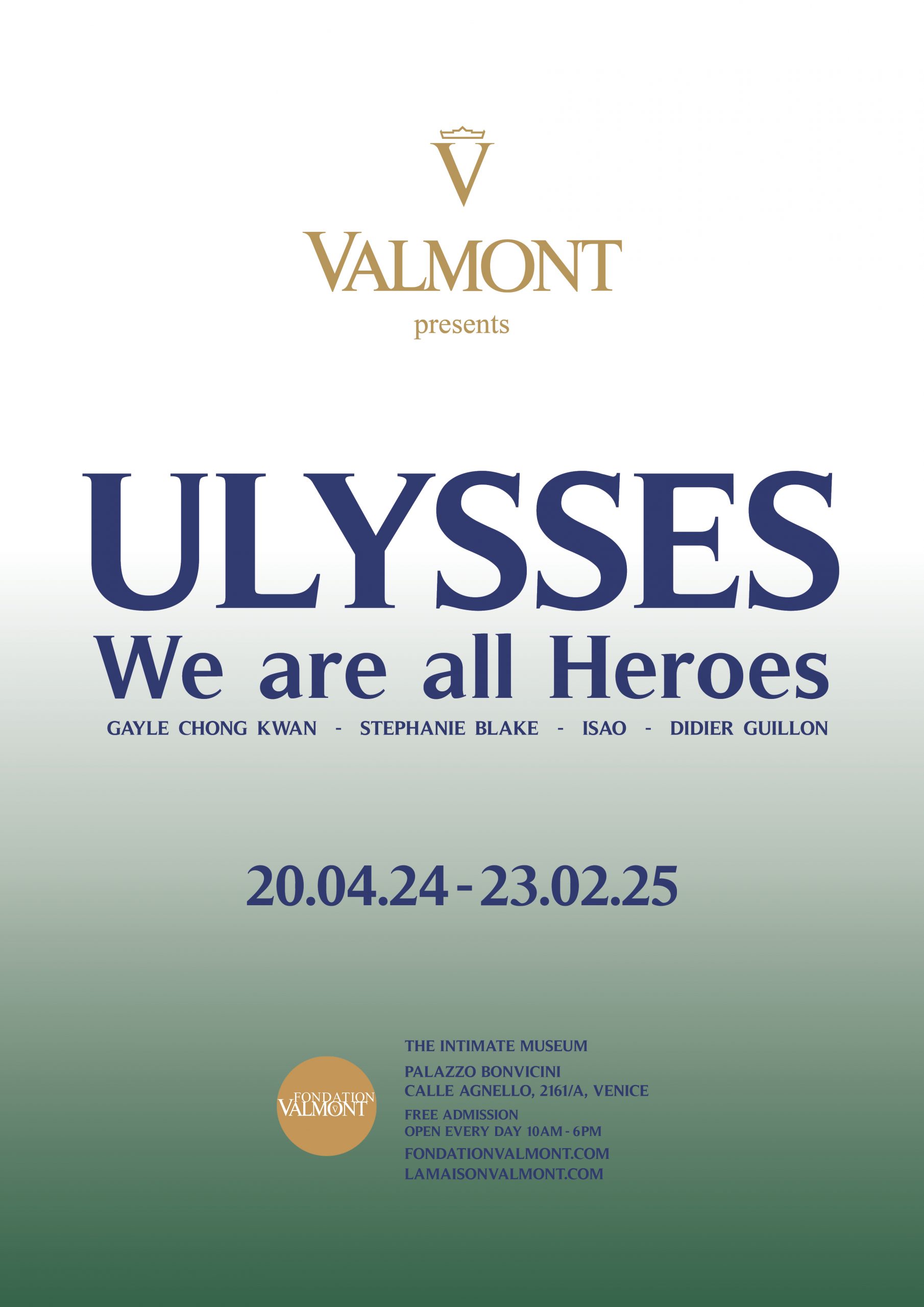
Location
Fondation Valmont
Palazzo Bonvicini
Santa Croce, Calle Agnello, 2161/A
30135 Venezia VE, Italy
Open every day,
10.00 am to 6.00 pm
free entry
info@fondationvalmont.com
CYCLOPS
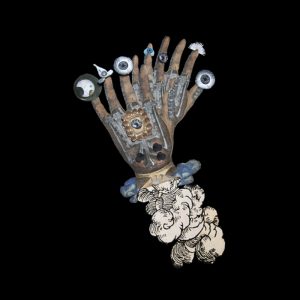
Room 1 presents the installation by Gayle Chong Kwan, which references the encounter of Ulysses with Polyphemus, who appears as a savage man-eating Giant, a symbol of a restricted vision and mind. Chong Kwan starts from this collision between two opposite worlds – intellectual self-awareness VS physical/intellectual blindness – for developing a multi-part installation. Cyclops explores visuality and the politics of the gaze through surveillance, art history, and the artist’s own severe visual myopia. Chong Kwan elaborates the work through historical and archival research, and as an encounter with Homer’s Odyssey in relation to her wider art practice of an expanded and embodied approach to visuality.
Cyclops consists of photography, sculpture, mobile, and painting. A large photographic triptych of a giant head and disembodied hands – part cyclops, gorgon, and medusa – is made of hand-cut collage of historical, contemporary, and AI generated images of ophthalmology, surveillance, photography, and virtual reality. A mobile structure is made of a large wooden tripod with metal branches from which hang painted and printed miniature collages of eyes of women artists from different periods in art history – many of whom remain less well known or unknown, unseen in the artistic canon – each surrounded by an intricate ‘frame’ made of details of their art. Three wooden frames on stands surround the mobile, that reference eye charts and vision correction, are made of digitally printed textile and photography, through which talismans, amulets, and totemic images relate to multiple perspectives or approaches to ‘seeing’.
CIRCE
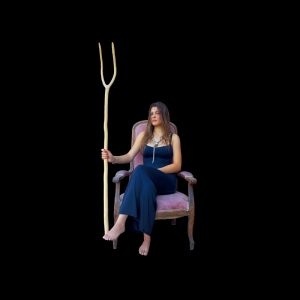
If Room 1 is filled with static, one-eyed gazes, a pair of women’s eyes is literally moving in the scenography of Room 2, conceived by Stephanie Blake. Here, a majestic Circe awaits the visitor, quiet yet solemn, with an attitude of readiness and self-defence. Lying all over the floor are ten doll-pigs, resting harmlessly.
Who is the woman dominating the scene? This goddess, daughter of Helios and Perses, lives alone on the island of Aeaea, condemned to eternity. Circe is the queen of her own solitary reign, constantly defending herself against the attempts of uninvited sailors. Because of her loneliness, she pre-emptively turns wandering men into pigs to ensure the safety of her home.
Unlike his companions, Ulysses is someone Circe can trust, and therefore someone she can show mercy to. Though potentially dangerous, Circe represents all that a peaceful domestic scene can offer – a sort of alternative Penelope on an alternative island, where Ulysses could become the undisputed king.
The installation Circe embodies the duplicity of this pivotal figure in the Odyssey, encapsulating a complex portrayal of a powerful woman standing above tamed men-pigs, still adorned with traces of mud, all quietly resting yet fearful. Circe is the epitome of a multifaceted identity in which opposing qualities coexist seamlessly; at once a cruel sorceress and a loyal companion, she represents the way in which self-love can manifest as the most formidable form of self-defence.
THE SIRENS
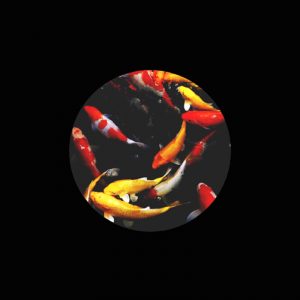
Despite the favourable conditions that prevailed for a year on the island of Aeaea, Ulysses’ thirst for adventure prevails, inevitably setting the stage for another historic encounter. In room 3, ISAO is tasked with bringing this mythical chapter to life. Initially, sound is used as a weapon of seduction: the visitor, drawn to uncover the secrets of this mysterious chant, ventures into the darkness. The lure whispered by the Sirens cannot but hide the unexpected.
Half woman, half bird, the charming yet ruthless Sirens embody both sensuality and extreme destruction. Luring wandering men with their song, inviting them to hear otherwise inaccessible knowledge, they lead their victims down a path from which they will never return. Inspiring, among others, the early examples of courtly literature of the XII century, which recount the tribulations of fairies like Morgana, the Sirens represent enchanting horizons, employing the chant as the ultimate form of seduction.
What this chant is about, nobody knows. Not even Ulysses: Homer doesn’t reveal the content of what the hero learns as his companions row incessantly with wax in their ears. The Sirens are thus the enigma, the unsolved mystery, and for this reason the experience is only possible through entering into the darkness of a perfect cube, where to discover what lies behind the ceaselessly echoing melody that lingers throughout the palazzo. The cube is a reference to the black box, the only element and witness that would remain if Ulysses and his crew were to suffer a shipwreck. The visitor entering in this space becomes part of the installation: the experience begins with the spectator looking at the round projection on the floor, like a pond full of “Kois”, the sacred Japanese fish, symbol of prosperity and good luck. The interaction shifts from passive to active as the visitor gradually becomes engulfed by the projection itself, which from its initial round surface expands until metaphorically it floods the entire floor.
DEATH OF THE SUITORS
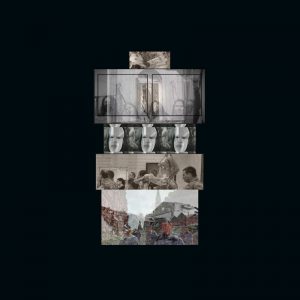
The visitor’s amazement continues in room 4, where Penelope, seemingly defenceless, endures the psychological blows of the suitors. Upon returning to Ithaca, Ulysses finds his homeland endangered, his safe port under severe threat. The suitors, exact opposites of the hero, represent the final challenge Ulysses must face before completing his nòstos.
As previously mentioned, Ulysses’ homeland, his sanctuary, faces peril. Penelope is indeed his safe place, the harbour where the ship finds refuge after navigating for so long. Universally recognized as the symbol of supreme faith, Penelope awaits Ulysses, avoiding direct conflict with the suitors while smartly outwitting them to resist their will.
Unlike his companions, Ulysses is someone Circe can trust, and therefore someone she can show mercy to. Though potentially dangerous, Circe represents all that a peaceful domestic scene can offer – a sort of alternative Penelope on an alternative island, where Ulysses could become the undisputed king.
Didier Guillon’s installation bridges the ancient narrative with contemporary issues, portraying the dangerous suitors as threats to Democracy, struggling to withstand mounting challenges yet always remaining resilient. Death of the Suitors serves as a manifesto of our era, prompting visitors to engage actively and contemplate the profound impact of current events on our future.
The visitor concludes the journey of ULYSSES. We are all Heroes in an immersive visual bombardment of the present. What shall we do to protect the monumentally majestic figure of Penelope? There she stands, our Democracy, potentially disintegrating like fragile cardboard, yet still remaining, metaphorically indestructible, hopefully for eternity.
